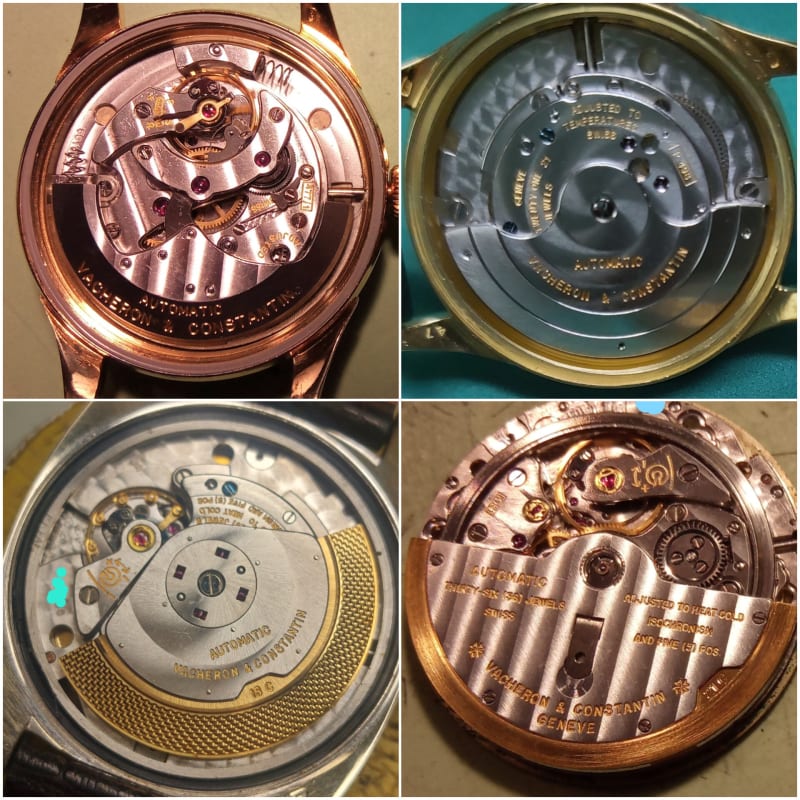Preamble: We can see tremendous value in the historical relevant Vacheron Constantin-automatics, which currently trade at a significant discount to their siblings, the Audemars-calibers. That both share the majority of their characteristics is shown below.
Yes, Vacheron used Quartz-Movements since the late 1970s until the 1990s -- the cal1009 & cal1010 -- when there was basically no way around them. But VC was not part of the C.E.H., the Swiss joint-venture of strong brands to develop a first quartz-movement, the Beta21 (1970-Apr). That is a bit surprising because not only almost every other relevant brand was contributing to this project but also because VC was much more innovative & willing to take risks when another movement-technology was introduced approx two decades before: the early automatics of the 1950s.
Top Left: Since 1950 Vacheron used the so called bumper- / hammer-automatic to offer automatic-movements to its customers, although the use of full 360°-rotor-automatics was impossible due to tight Rolex-patents (Rolex Perpetual). So VC used a JLC-ebauche employing a 260°-moving hammer that bumped into springs at the end of it move -- the Vacheron cal477. And even though it is quite an inefficient winding-mechanism, the charme of that feeling on the wrist and the romantic noise it makes, is something that is often searched but almost never found in modern mechanical watches.
Top Right: The 2nd generation of VC-automatics was the cal498 / cal499 (*1954ff, small- / central-second). Also based on a JLC-movement it was Vacherons 1st rotor-automatic. And while AP in their cal2499 (which is based on the same JLC-ebauche) used a beautiful decorated 18K-gold weight, Vacheron focused a bit rustic on the pure functionality. However, both the AP & the VC variant of the cal499 used a simple steel-steel-bearing: simple but frictional.
Bottom Left: The 3rd generation (1958ff) is probably the most iconic and characteristic automatic ever used by VC & Audemars Piguet: the cal1071 / cal1072 or cal2071 / cal2072 as AP calls them. The Guilloche-decoration is now something very common and applied by AP & VC, as well. And next to this there are four ruby-rolls visible around the center of the winding-mass: the bearing of this rotor and less frictional and much more beautiful than the earlier cal499.
Bottom Right: We can see here the 4th generation of the AP- & VC-automatic movements -- again based on a Jaeger-ebauche, the JLC cal920: the VC cal1020 and the AP cal2020 introduced in 1967. Running on a center bearing with support by ruby on rails at the perimeter of the rotor -- which create the characteristic sound -- it was a super-thin beautiful automatic that made its large footprints in horology (AP Royal Oak ref5402, PP Nautilus ref3700 and many more) and became a classic.
So, in short: When the Rolex-patent for the rotor ran-out in 1953 the relevant improvements in automatics were made in just approx 14y. Until 1967, right when Eternas patent for the ball-bearing (Eterna-Matic) expired. Sure, we see some minor changes from there but the 1967 cal1020 (AP cal2020, respectively) was kept in the portfolio for more than five decades and that alone, says a lot.
